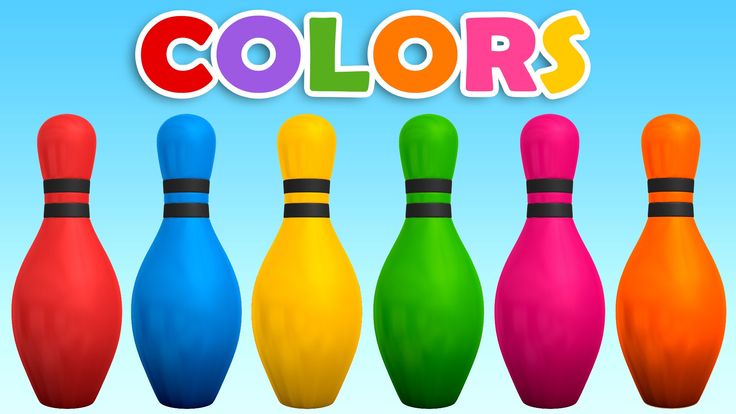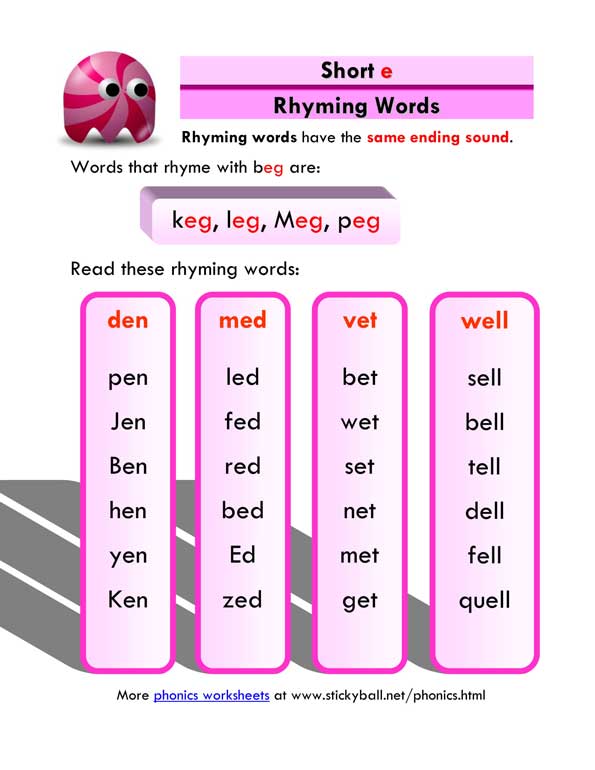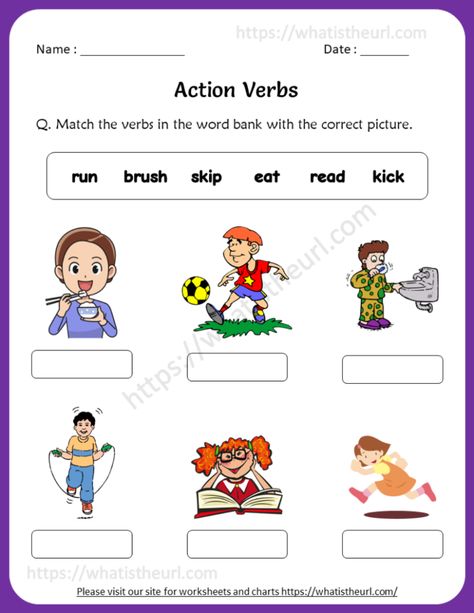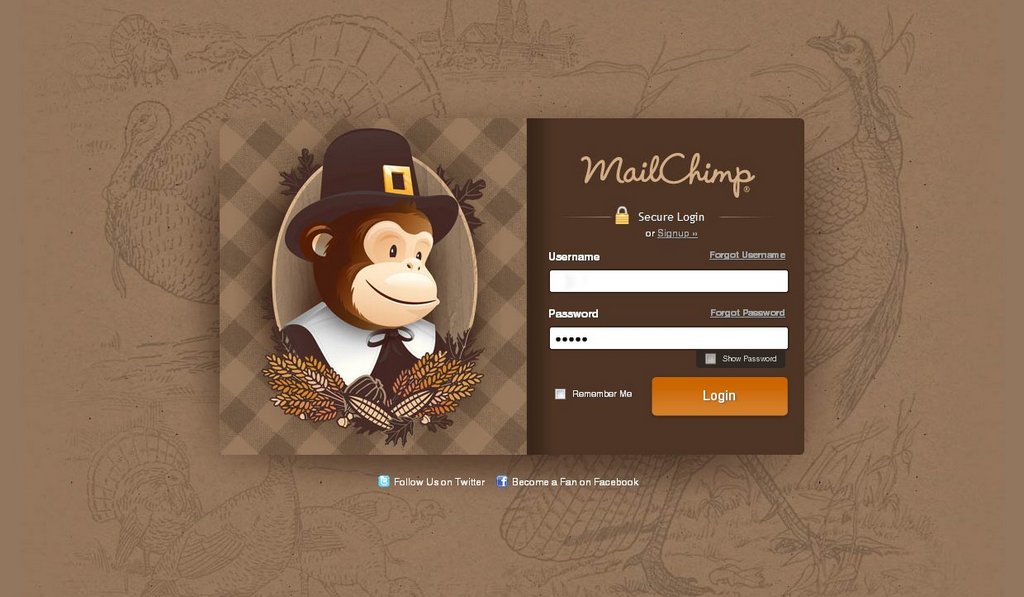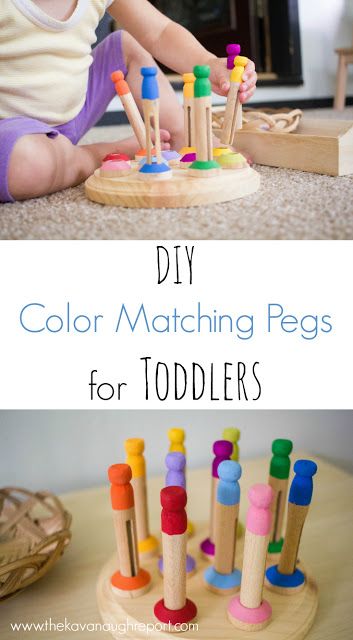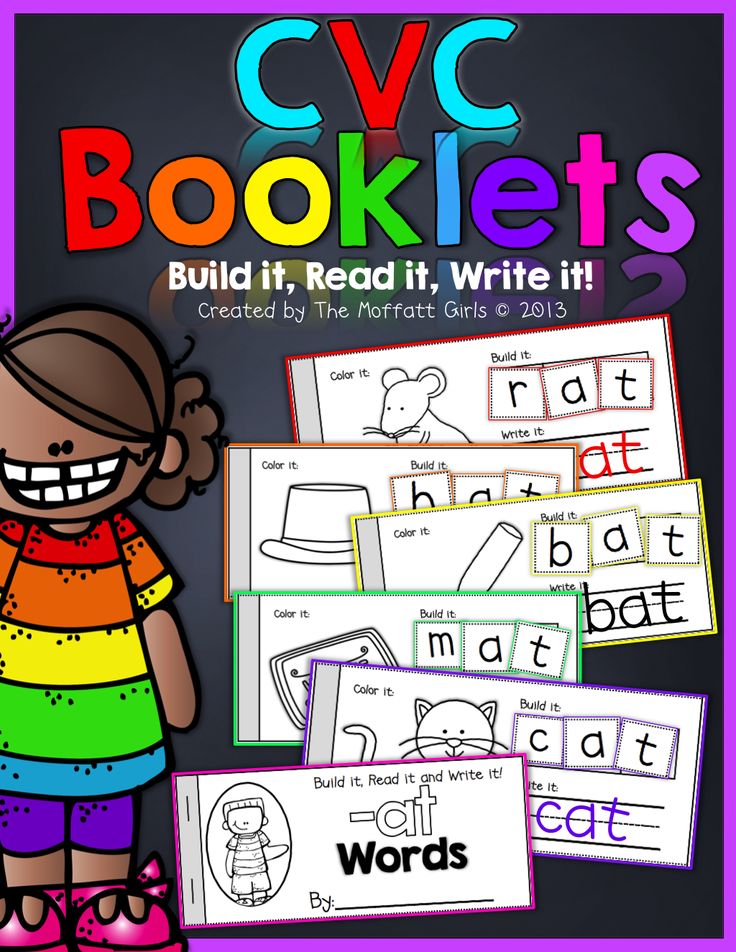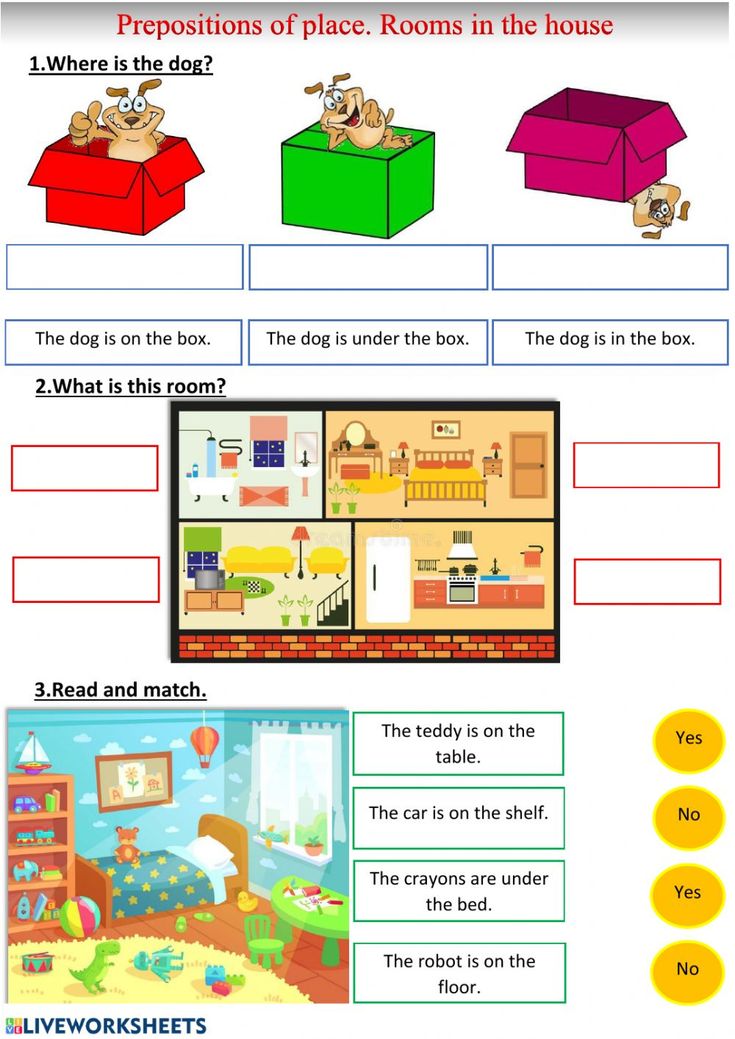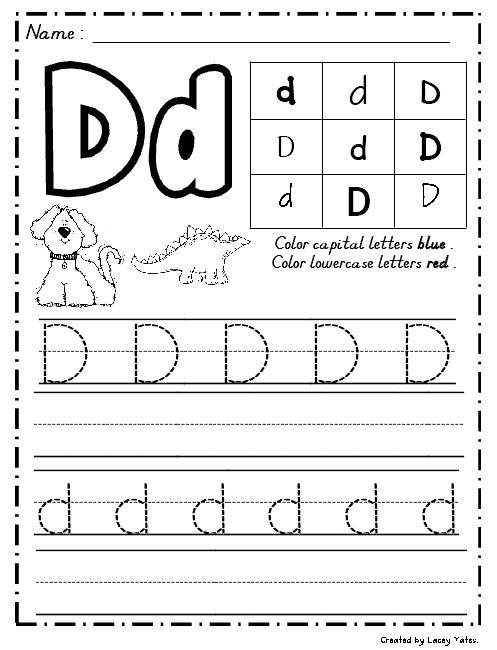Learning colours for babies
9 Simple Ways to Get Your Toddler to Learn Colors
97 shares
- Share
- Tweet
Once your child has reached the big milestone of turning 1, you’ll notice they become little sponges of information. They start walking, talking, and being so much more independent now that the baby stage is long gone.
Around this age is when you can start introducing them to colors. It’s important for a child to start hearing words often in order to remember it.
Even though they probably won’t be able to fully understand and retain the concept of colors until around 18 months, it’s a good idea to start teaching it early on. This is when learning colors will start to make sense to them, just like learning names of objects made sense to them around the 1 yearmark.
Color matching (putting the red piece on the red spot) is one of the simplest forms of learning colors. It may occur first, along with recognizing and choosing colors when asked for them (handing you the red piece when you say give me the red piece). Lastly comes naming colors (being able to say red when asked what color is this?).
This post may contain affiliate links which I would receive a small commission should you make a purchase.
The key to your child learning colors is over-exposure. As I’ll talk about below, you want to give them tons of opportunities to hear you say the colors names, be asked the color’s names, and see them often.
Get A Year of Activities for Your Child FREE!
Sign up here to get an email every month with new and exciting crafts, activities, and printables for your children.
I started really introducing my daughter to colors around 16 months old and she got a grasp of the concept quickly. Here are some simple tips to teach your toddler their colors:
1. Start simple
Don’t overwhelm your toddler with too many colors at once. Focus on two at a time and then add more in as they become familiar with those.
Whenever you see those two colors, point them out to your child, but don’t label any other colors yet. For example, choose to teach your child red and green first. Whenever you see anything red or green, point it out. Give them only red and green objects at certain playtimes.
For example, choose to teach your child red and green first. Whenever you see anything red or green, point it out. Give them only red and green objects at certain playtimes.
Clearly label and talk about the red versus green objects. Ask them to sort only objects that are red or green. Once they are familiar with red and green and the differences between those two, add in yellow. Of course they will see other colors while they play, but really try to only speak about the few colors that you choose.
Showing them less choices will help them to remember the colors easier.
Related post: Pom Pom Tube Drop: Toddler Fine Motor Activity
2. Use small, colorful objects for sorting
I love using fun, simple objects for learning colors and counting. Toddlers love little pompoms because of their softness and they’ll be excited to learn with them.
I like to group and sort them by color as my daughter puts them into their correct pile. If your child is just learning colors, naming the colors of each pompom works great too.
This Rainbow Counting Bears Sorting Toy makes a fun learning resource for introducing color recognition & basic mathematics concepts such as counting and addition. It can also be used for kids math and counting games for toddlers and great for developing fine motor skills with the tongs.
Have your toddler sort the bears into their same color cup. They can use their hands or tongs . They’ll also have a fun time using their imagination to make stories and games with the bears.
3. Distinguish contrasting colors
It’s best to use colors that are not at all similar to each other so you don’t confuse your toddler. Items that have contrasting colors will stick out more to them when they’re learning.
For example, if you’re teaching colors side by side, don’t put blue and purple together, red and orange, red and pink, etc. Colors that pair well with contrast are red/green, blue/yellow, purple/green, and black/white. There are plenty more combinations to use.
Also, sometimes certain shades of a color will be closely related like a yellowish green will look similar to yellow or a turquoise could look closer to a green or blue. Try to stick to the basic primary colors when teaching them.
Try to stick to the basic primary colors when teaching them.
Check out our post on the Pompom Whisk Activity for Toddlers where you child can try a fun activity while also learning their colors.
4. Color puzzles
Puzzles are a great activity to develop language, cognition, and fine motor skills. My daughter loves the Melissa & Doug Colorful Fish Puzzle and is always asking to do it.
While we play, I verbally label each color as she puts the piece in the board so that she hears it over and over and can match the color name with what she sees.
Since this color puzzle is using all fish, your child won’t have to focus on the pictures or objects on the puzzle, but will be able to just pay attention to the colors. I think this was one of the best aids that taught my daughter her colors so early.
5. Use the same objects
The concept of colors may be a little difficult for babies and toddlers to understand because it’s a word typically used to describe something else. So far they have been learning words of actual things, like ball, car, mommy, milk, etc.
So far they have been learning words of actual things, like ball, car, mommy, milk, etc.
All items they can see or hold and names of these objects can make sense to them.
To get them to understand the concept of colors better, make sure you’re using two identical objects to point out the color differences. For example, don’t show your child a red car and a blue block because she will just think that you’re naming it differently because the object is different.
Instead, use a red car and a blue car to distinguish the differences.
This activity below works on color matching and sorting which are the first color activities your toddler will be able to do. We used MegaBlocks, but you can really use any blocks or toys that have different colors.
Simply put construction paper on the floor in the colors of the blocks and have your child match their toy to the colored paper. Read more about this activity here.
6. Label EVERYTHING with a color
This will help them to quickly build their language and vocabulary.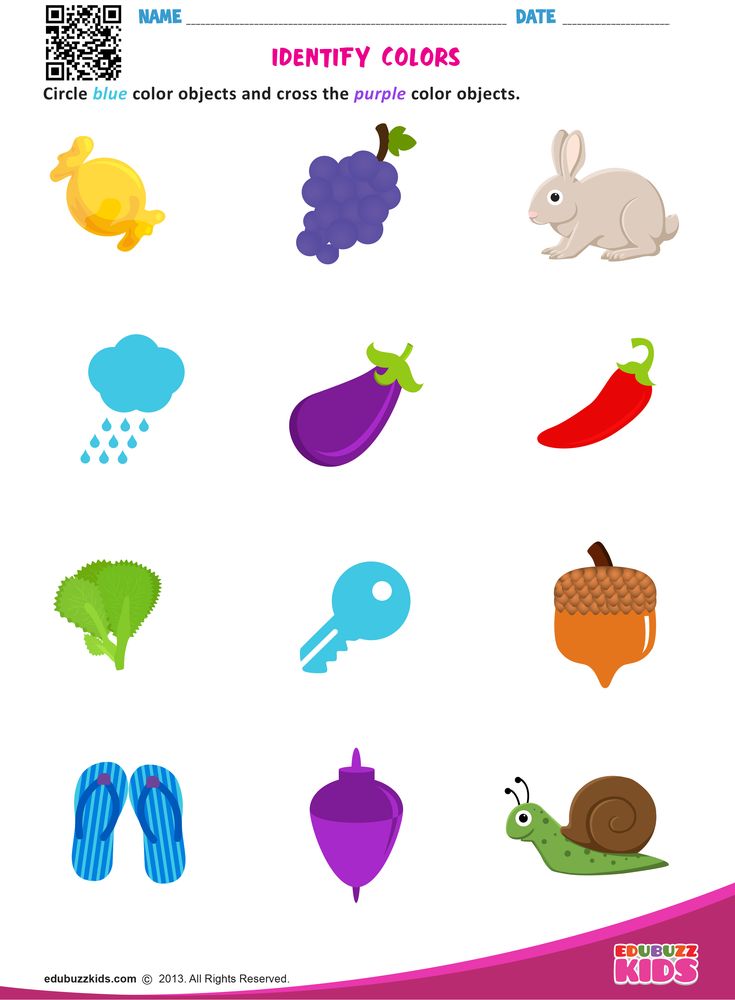 Anything they see in their everyday world has a color. Make sure to verbally label objects with their names and colors as you see them, pass them, and give to them.
Anything they see in their everyday world has a color. Make sure to verbally label objects with their names and colors as you see them, pass them, and give to them.
When you’re first starting to introduce colors, you may want to just label the colors on their own so they’re not confused by the color and the name. You’d be surprised how quickly children pick up these concepts and understand that you’re not naming the object, but just describing the color.
Related Post: Sticker Letter Activity: Letter Learning for Toddlers
7. Color with crayons and markers
Coloring is a great skill for toddlers to develop fine and visual motor skills (coordinating their hands and eyes to perform a task). Have your child use crayons to scribble on paper and point out and label the colors that they use.
You can print out free blank coloring pages of their favorite characters or objects hereif using a blank paper gets boring to them.
For little hands, I highly recommend these finger crayons.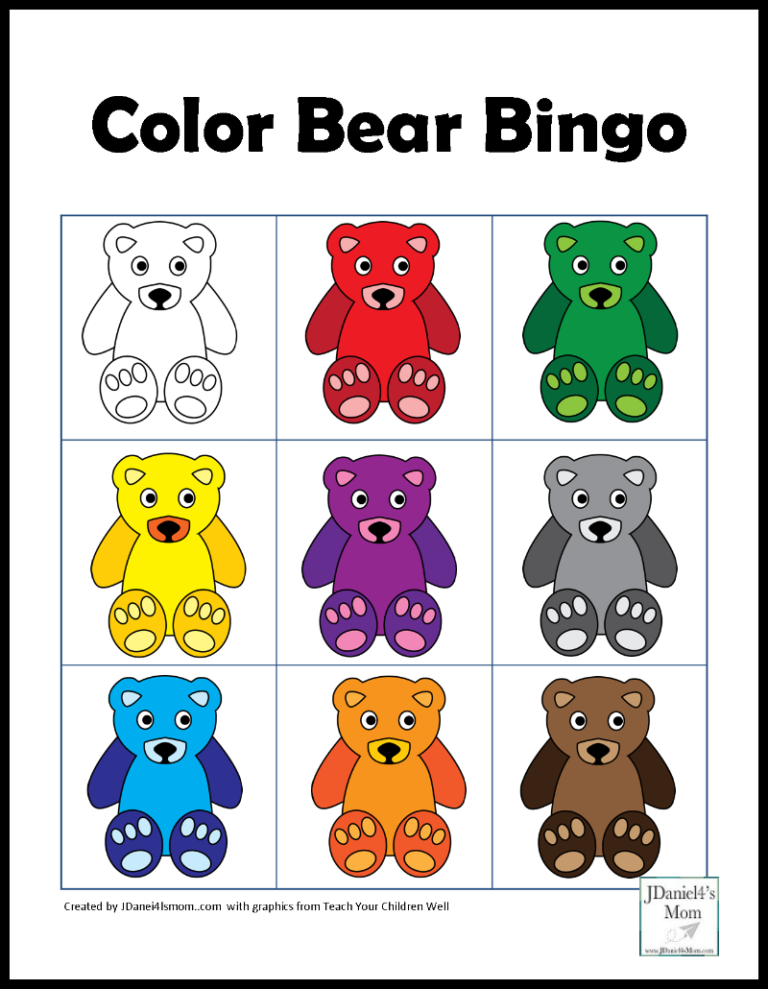 They are perfect for tiny fingers to wrap around and promote a proper grasp around the crayon. Skinny or chunky crayons just don’t allow your young toddler to hold it the correct way and it will end up tiring them out quicker.
They are perfect for tiny fingers to wrap around and promote a proper grasp around the crayon. Skinny or chunky crayons just don’t allow your young toddler to hold it the correct way and it will end up tiring them out quicker.
8. In their natural environment
Kids learn best in the context of their everyday environment. Point out the contrasting colors at:
- mealtimes (green beans, yellow corn, red raspberries)
- during dressing (blue shirt, black pants)
- during playtime (red blocks, blue balls)
- outdoors (blue sky, green grass, pink flower)
9. Fingerpainting
Sensory experiences where children are actively touching, tasting, hearing or smelling things are one of the best ways to teach your kids new concepts. Your toddler will love trying out their artistic capabilities by rubbing their hands on paper with finger paint.
By just getting 3 primary colors (blue, red, yellow) of finger paint, you can mix them until you make secondary colors (green, purple, orange).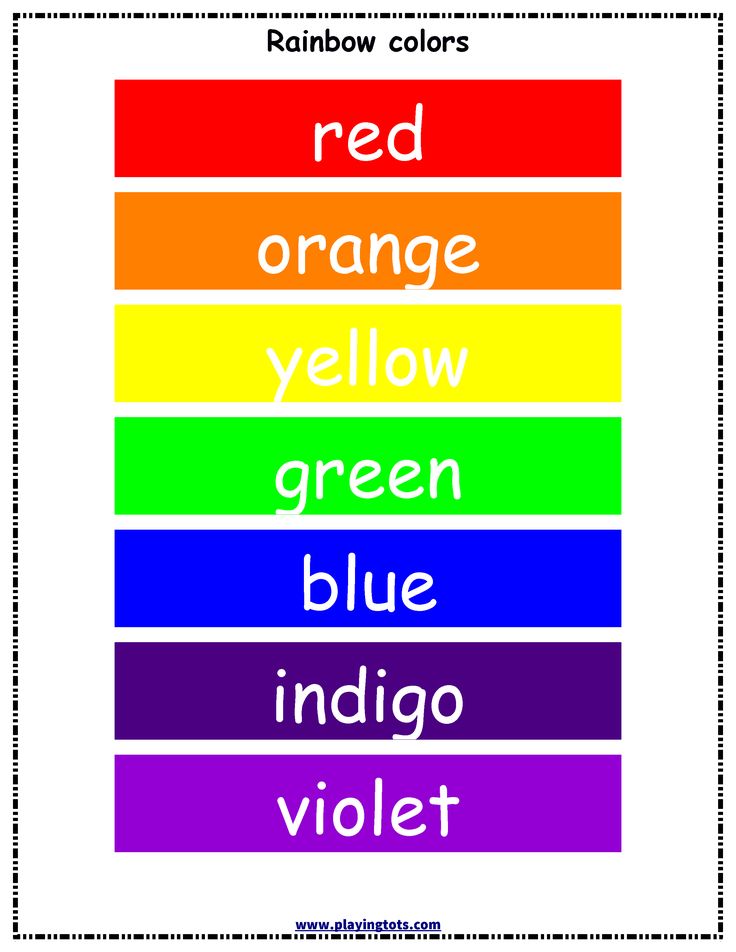
Have your toddler rub their hands and fingers in the paint and just smudge it onto paper. Talk about the colors they are using and ask them what color is on their hands and on the paper.
You can make your own finger paint at home so quickly, which is safe and even edible for your child. Check out this post: Sensory Edible Finger Paint for the recipe!
Related Post: Edible Finger Painting Recipe
10. Songs and Videos
Toddlers and babies love to hear music. Whether it be songs on the stereo, mommy singing, or making their own sounds by shouting at the top of their lungs, they are drawn to it.
Using songs (especially with visuals) is a great way to teach your child new concepts. Putting words to music helps things to stick better in their brain and will give them a higher chance of learning the skill.
Here is a short video that can help your toddler to learn their colors by combining colorful graphics to a catchy tune. You can also make up your own songs and melodies to sing as you show them colors.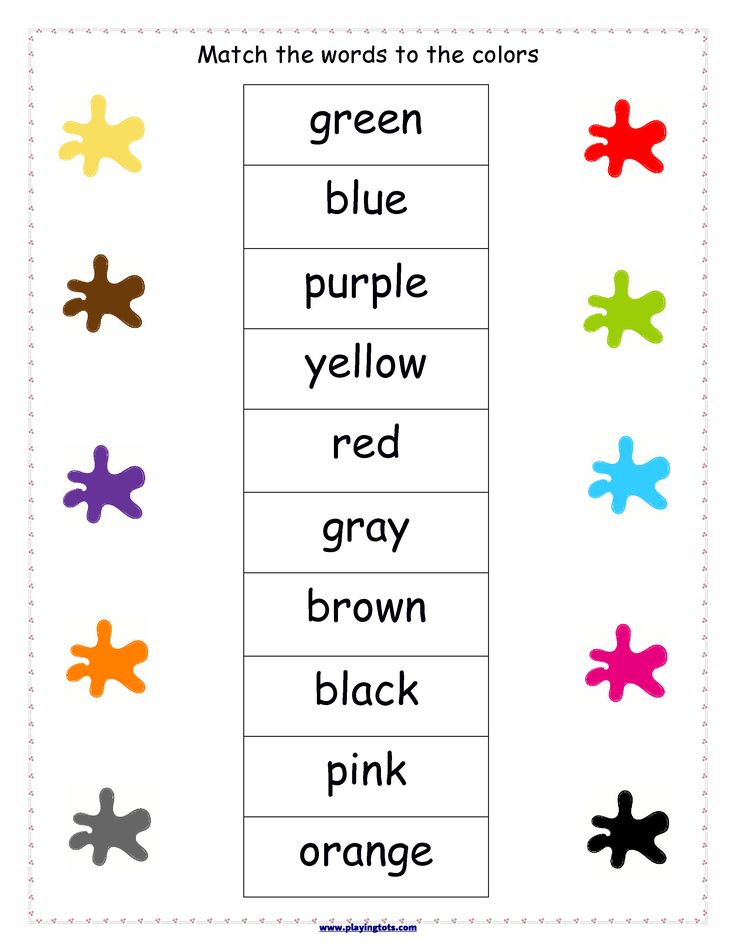
Even just saying the colors but having a little rhythm to it will help your child to remember the colors easier.
Related posts:
How To Teach Your Toddler Colors! (9 SIMPLE Strategies)
lorsAre you trying to teach your child the beautiful colors of the world?
It’s kind of hard, huh?
When I started teaching my kids colors, I had no idea that it could be more complicated than learning the alphabet or numbers!
But it makes complete sense. Toddlers are learning to identify SO MANY new objects like shoes, apples, balls, etc.,
And then, we add the element of color to each item.

That’s pretty high-level thinking for these kiddos!
For a frame of reference, Most toddlers can learn how to differentiate colors by 18 months old. However, it takes them a little longer to be able to name the colors. This milestone typically occurs at 2.5 or 3 years old! But remember that these ages range DRAMATICALLY between different kids, so don’t panic if your child is a bit behind.
Do you want to teach your child about the beautiful colors of our world?
In today’s post, I am sharing 9 ways you can teach your toddler the colors!
#1. Focus on one color at a time.
I don’t know about you, but opening a brand new pack of Crayola crayons is one of my favorite things to do!
In that box of crayons, there are many colors to choose from, and the massive amount of choices can become a problem. To keep a toddler from being overwhelmed, it’s best to have them choose one color that is their favorite.
By focusing on only one color at a time, the child will be able to identify that color more clearly.
When your child has picked out their favorite color, allow them to get some of their creativity out! Grab a piece of paper or coloring book page and show your toddler how to scribble with the crayon.
Make sure to point out objects inside and outside the house that are the color that they chose to make a connection to real-life things.
Once they have mastered one color, move onto another color.
#2. Sort objects by color.
Do you want your kids to be organized like Marie Kondo? YES PLEASE!
Learning how to sort things can help organizational skills! Sorting activities are great for learning that things can be different and the same.
Painting trays View/Check Amazon's Price
I like to use a paint tray for sorting activities because it separates each colored item.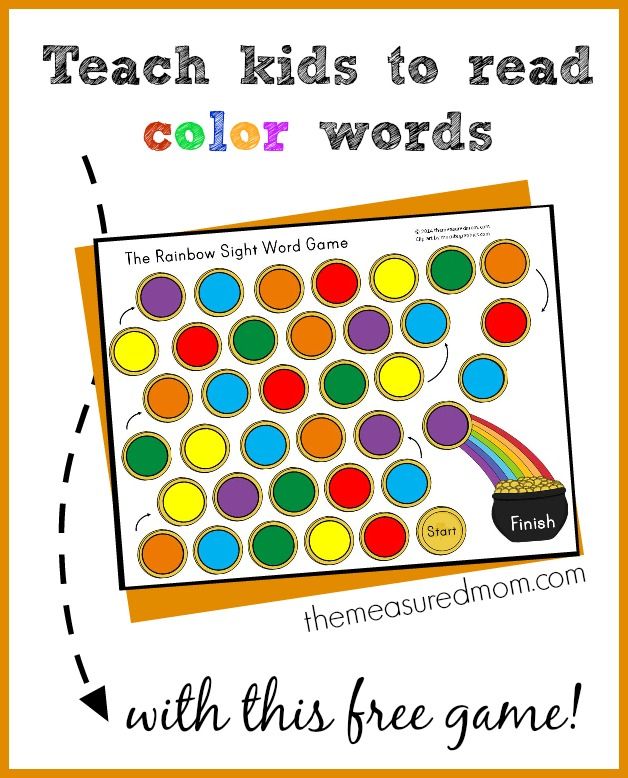 If you don’t have a paint tray, you can use cupcake tins or even just different boxes or Tupperware containers!
If you don’t have a paint tray, you can use cupcake tins or even just different boxes or Tupperware containers!
In the beginning stages of sorting, you should label what color item you want the toddler to place in each section, so it’s easier for them to figure out. Also, start with only 2-3 different colors to sort then add more when they get the hang of it!
The great thing about sorting activities is that there are endless possibilities of items that you can sort. Some examples are pom poms, colored paper clips, beads, colored goldfish crackers, marbles, Fruit Loops, M&M’s, and Skittles.
You can dump out the items of your choice out on the floor or table and show the toddler how to separate the things in different sections. Ask them to finish what you started! It may take them a little bit of time to catch on, so be patient and give them positive feedback.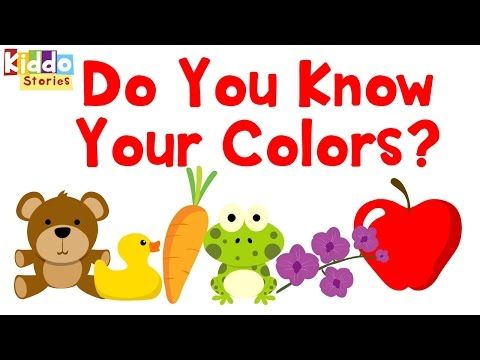
#3. Play with color learning toys.
When I first began teaching my children colors, I didn’t use any toys. I thought it’s best to use art supplies to teach them about the colors!
But after my son started coloring with markers all over my kitchen floor, I needed to come up with a better plan.
Through play and everyday experiences, children will learn their colors if a parent or caregiver helps teach and interact with them!
Here FIVE of my favorite toys that help children learn their colors!
A. Color Fun Fish Bowl
There are two functions on this toy. It can explain what color each fish is when it’s put into the bowl, or it will ask the toddler to find a color and place that fish in the slot. My son enjoys putting the fish in the slot, which works on fine motor skills too!
B. Counting Bears with Stacking Cups
View Price - Amazon
The counting bears work on several different skills (colors, sorting, and patterns).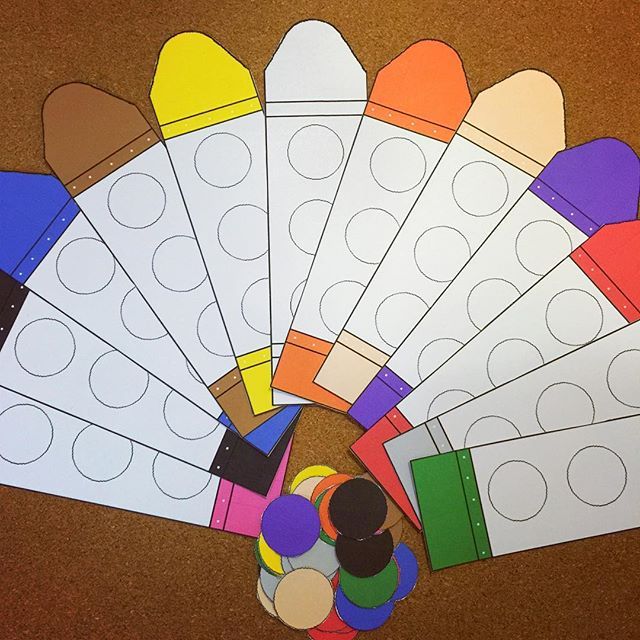 The counting bears are excellent for older toddlers and preschool-aged children!
The counting bears are excellent for older toddlers and preschool-aged children!
C. Think & Learn Smart Scan Color Chameleon
View Amazon's Price
SO INTERACTIVE! The color chameleon lights up and changes its color depending on what paint splat it touches. Kids can also scan other things around the home too, and it’ll light up that color, which is AMAZING! Lastly, the chameleon has a game mode that has several different options for preschoolers, so this toy is excellent for long term use!
D. Melissa and Doug Fish Colors Mix ‘n Match Peg Puzzle
View Amazon's Price
It is no secret that I love Melissa and Doug learning products. I honestly feel that all of their puzzles helped my kids learn not only their colors, but the ABC’s, numbers, and shapes!
I honestly feel that all of their puzzles helped my kids learn not only their colors, but the ABC’s, numbers, and shapes!
E. Color Matching Egg Set
View Amazons Price
These color matching eggs not only works on color matching, but it also works on counting. These eggs are one of my son’s favorite toys right now!
#4. Break out those art supplies!
Letting your toddler play with crayons, markers, colored pencils, or paints is one of the BEST ways to introduce the world of colors to them.
Recently, my son has discovered our dry erase markers, and he LOVES scribbling all over our dry erase board! This simple activity keeps him busy for 15 minutes!
Like I said earlier though, make sure you keep your eye on them if you give them any markers, crayons, etc. because things can get out of hand quickly 🙂
Need some inspiration?
Here are THREE easy and fun ideas that I have done with my kids that focus on learning the colors!
A.
 Plastic Bag Painting
Plastic Bag PaintingI have been teaching my son the colors by doing a color of the week project. To keep things less messy, I tried finger painting through a zip-lock bag.
B. Cotton Ball Painting
You need a picture to paint, cotton balls, wooden clothespins, kids washable paint, and a paint tray/cupcake tins work too!
C. Rainbow Art
For the older toddlers and preschoolers, this rainbow project is perfect for learning the colors of the rainbow!
For this project, you need Fruit Loops, cotton balls, paper, and glue.
#5. Try Mess-Free Art!
What if I told you that you didn’t have to clean up after an art project?
You don’t believe me, do you?
There are days that I don’t feel like wiping down all areas of my kitchen because of an art project.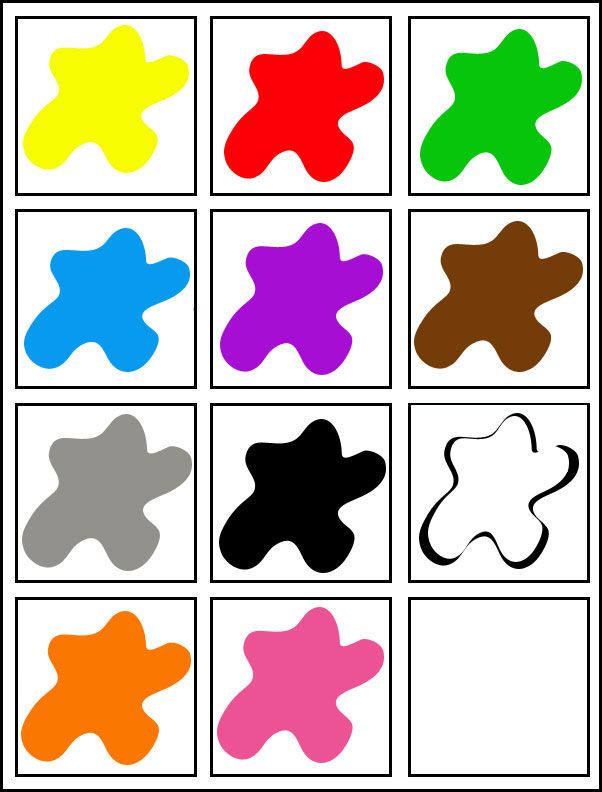 If you’ve never been introduced to the Crayola Mess-Free collection, you must check these items out!
If you’ve never been introduced to the Crayola Mess-Free collection, you must check these items out!
The inks and markers from these 3 products
WON’T stain skin, furniture, or fabrics!
A. Crayola Color Wonder Mess Free Moana Book
These coloring books are the BEST on the go activity. We bring them on airplanes, take them to restaurants and in the car!
Need extra mess-free coloring markers?
- Crayola Color Wonder Markers
B. Crayola Color Wonder Mess Free Coloring Activity Set
View Amazons Cost
My son got this set for his second birthday, and we used it immediately at a sporting event we attended! This is a great on-the-go activity when you know your child may be bored within a few minutes.
This set comes with 5 markers, 15 coloring pages, 2 sticker sheets, ink pad, and 4 stamps!
C.
 Crayola Color Wonder Mess Free Magic Light Brush
Crayola Color Wonder Mess Free Magic Light BrushCheck Amazons Price
The paints for this set will only work on the color wonder paper provided. The paint is clear, but when it brushes on the color wonder paper, it will turn the color that is in each container!
#6. Point out colors that you see!
This strategy is one of the BEST ways to teach the colors to your toddler!
Everything in our world has color, so make sure to point colors out to your children!
When explaining colors to a toddler, show them a specific object, and tell them what color it is. “Look at that tree, it’s leaves are green,” “Take a bite of this red apple,” or “that bicycle is blue” are some examples of how you should describe an object to a toddler.
When you want to start checking for understanding, you can ask them questions like:
- “Find me the purple flowers,”
- “Show me the orange ball,”
- “Can you bring me the brown marker”?
This is a more advanced skill because the child will have to choose the specific color you are asking for.
#7. Check for understanding.
Asking your toddler questions about colors is one of the most critical parts of the learning process. You will have no idea what they know if you don’t ask them questions.
Want to see an example of a way to check for understanding with colors? Take a look at this video of me asking my son questions about colors using pom-poms.
If your toddler makes a mistake while you are checking for understanding, make sure to provide them with corrective/ positive feedback.
In the video, you see that my son loses interest for a few seconds.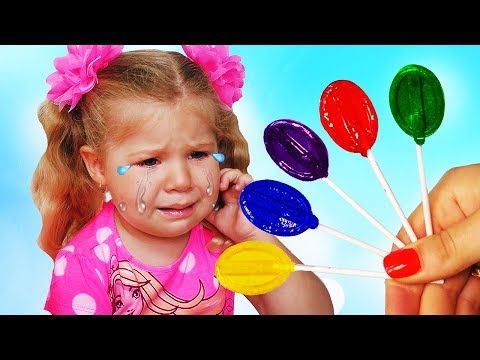 Follow their lead when you are working with them and then try to pull them back in to see if they’ll continue. Trust me; you will be able to know if and when they are completely checked out 🙂
Follow their lead when you are working with them and then try to pull them back in to see if they’ll continue. Trust me; you will be able to know if and when they are completely checked out 🙂
Does your toddler turn around and play with other toys when you try to ask them questions?
Think about when you were in school, and a teacher picked on you randomly when you weren’t ready to answer. That was THE WORST, right?
If your toddler doesn’t like to answer questions every time you try to check for understanding, that doesn’t mean that they don’t want to learn or they don’t understand the information.
They may want to show you differently what they know.
For example, if your child is playing with a color puzzle and they can match the colors together, then you know they are understanding colors.
Keep encouraging them by explaining each color as they play, and they will become more confident when being asked questions!
#8.
 Read color learning books.
Read color learning books.
We all know how essential reading is at every age! These first learning books that talk about colors are perfect for toddlers to start to learn.
Here are THREE of our favorites!
A. Brown Bear, Brown Bear, What Do You See?
This book is one of my son’s favorites! If your toddler loves animals, this is the book for them. At the end of the book, all of the animals are pictured at once, which is an excellent time to point out colors and check for understanding!
B. Little Friends Sound Book: Colors by Roger Priddy
Looking for something more interactive? Little Friends Sound Book: Colors has buttons on the side that your toddler can touch to match the colors on each page!
C. Mix it up! by Herve Tullet
This book is for older toddlers and preschoolers. It’s wonderful for children that have a good grasp of the colors already because it talks about blending colors to create another color!
It’s wonderful for children that have a good grasp of the colors already because it talks about blending colors to create another color!
Personally, I’d choose this book because you’ll get the most use out of it for future learning!
9. Get moving!
Are you looking for a way to get your child active while learning?
The following THREE color games will keep your toddler staying up and moving while working on their colors!
A. Color Scavenger Hunt
You can create your own scavenger hunt worksheet or use the one I created below!
- CLICK HERE TO GET YOUR FREE SCAVENGER HUNT PDF
Ask your toddler to find a specific object like “run and grab me a green leaf,” or you can be less specific and say “gallop to the garage and find something blue.” When they complete a task, check it off and go through all the colors with them!
Have a basket of all the items they collected and review at the end! They will love looking through everything they found.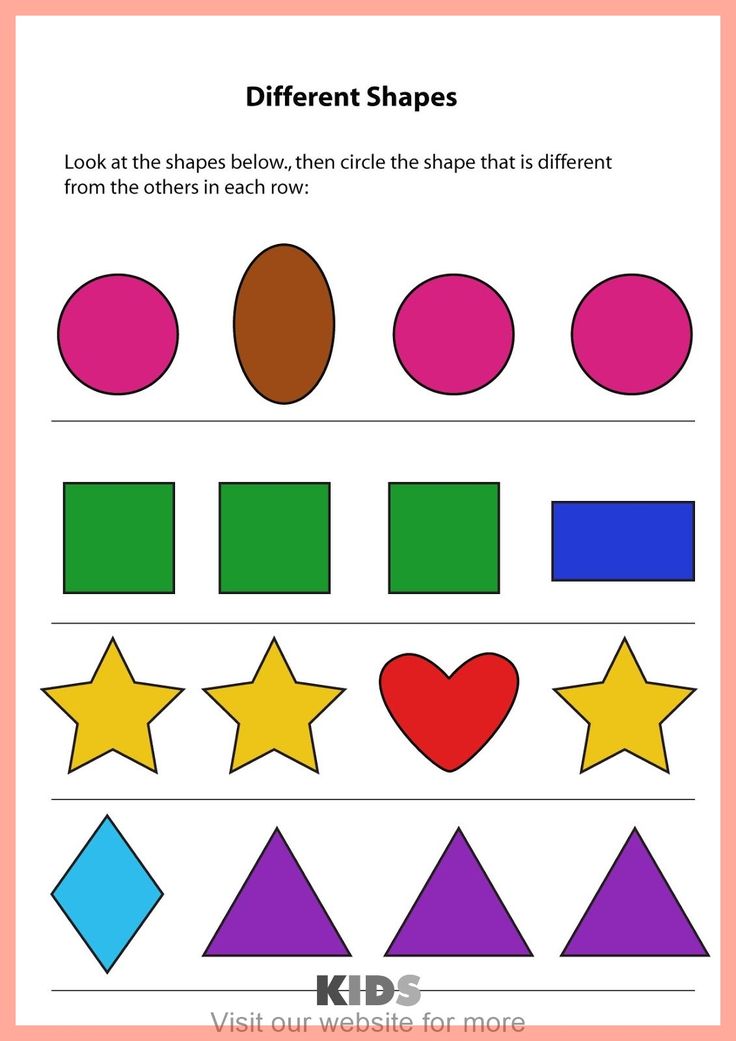
Adding locomotor skills for older toddlers will excite them! These are movements such as skipping, running, leaping, galloping, sliding, walking, and hopping.
B. Bean Bag Tossing Game
Check Amazons Price
These beanbags are colored and have the name of the word written on them. You can work on color recognition for younger ones and sight words for preschoolers!
One of the best things about this game is that you can work on throwing and aiming skills.
To play with these bean bags, you need first to find a laundry basket, small trash can, or corn hole board! Then ask your toddler to pick a specific color and throw it in whatever container you have chosen.
C. Color Hopping Game
Take sidewalk chalk and make large circles with each color chalk that you have.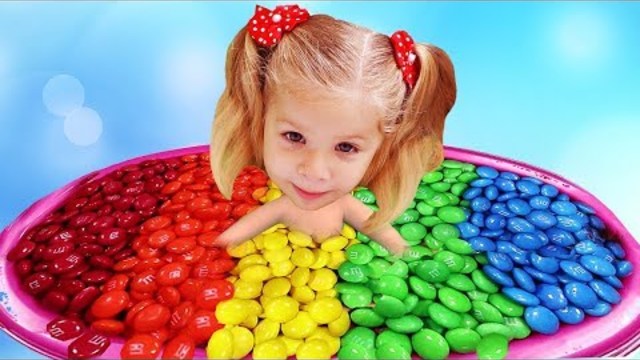 Ask your toddler or preschooler to hop to a specific color.
Ask your toddler or preschooler to hop to a specific color.
After they reach that color, you can have them hop to another color, or you can have them perform a different locomotor movement.
Final Thoughts and Conclusion
Teaching your toddler colors is a fun but challenging adventure!
It’s essential to focus on one color at a time, play with color toys/art supplies, and point out colors daily. Try to mix up the activities that you do with them to keep them engaged and excited to learn!
I would love to help in your journey teaching your toddler colors. Whether you need some creative ideas or you need more helpful suggestions, please leave a comment below.
Also, I’d love to know:
What are your favorite ways to teach colors to toddlers?
Learn shapes and colors for kids
Description
Learn Shapes and Colors - Educational and educational games for kids and toddlers.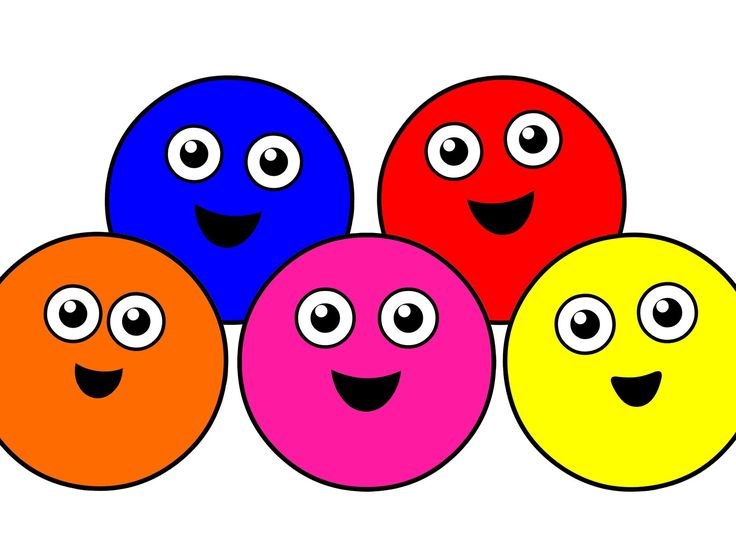
Together with the rabbit, we will go to visit his girlfriend. Along the way, we learn to distinguish shapes and colors, solve logical problems, sort objects, and train our memory.
There are 6 fun games in the app:
- COLORS: find the object by color
- SHAPES: guess the shape of the object
- LOGIC: logic game with colorful figures
- MEMORY: a game for training memory and developing intelligence
- OBSERVATION: find the same objects
- SORT: find shapes
The application "Learn shapes and colors for kids" is aimed at developing spatial thinking, fine motor skills, memory training.
Children's game "Learn shapes and colors for kids" will help your baby to distinguish colors and shapes.
The game is intended for children aged 2-3-4 years.
We also advise you to pay attention to our other educational applications for children. We not only learn fun letters, sounds, the alphabet together, but also numbers, shapes, colors, simple mathematical operations.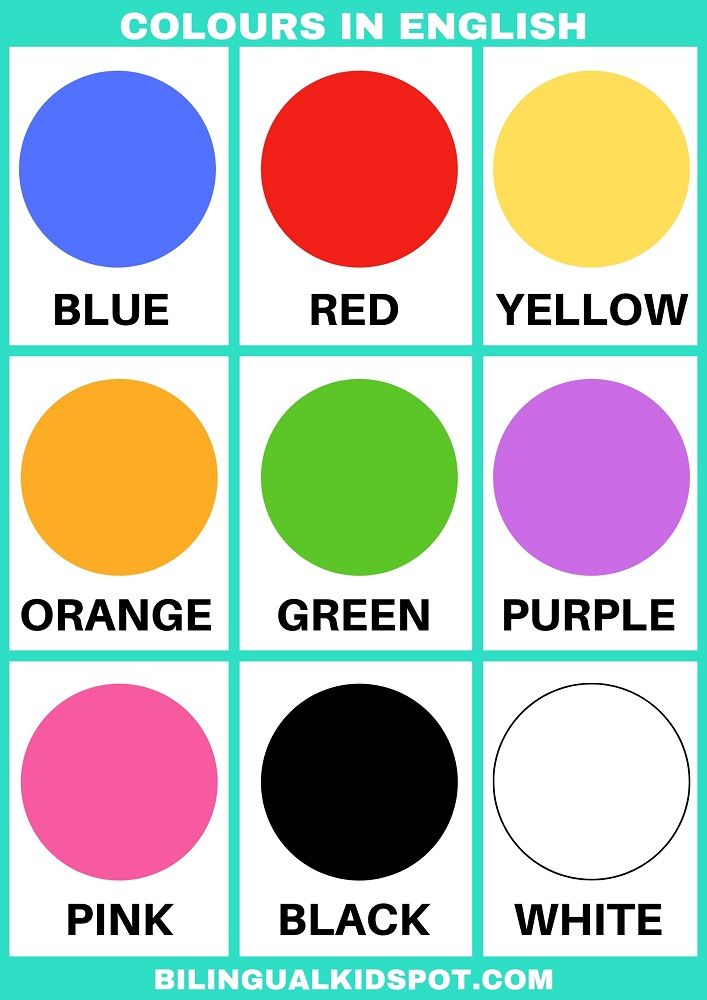 We create children's educational and educational games for you and your children.
We create children's educational and educational games for you and your children.
We are open to all your wishes! Send your suggestions to [email protected].
If you like our application and want to continue, please rate it.
Version 1.6
The app has been updated by Apple to display the Apple Watch app icon.
Spring is coming. The rabbit cleans the snow, buys carrot seeds and fixes small bugs in the app.
Ratings and reviews
Ratings: 836
Great game ‼️
I liked everything very much
smart rabbit
A good application, my son and I really liked it 1.
8, it’s only with my help to drive around the screen, but it solves tasks, it’s very useful, and you need to think and move pictures around the screen, just for development)) plus live pictures and various interesting tasks! For children after 3 years in general, I think it will not be interesting already. A huge plus there is no annoying ads and the application itself is free! Thank you)
Excellent!
Super game. My daughter and I really like it, and she began to learn figures with pleasure!
Developer OLGA NIKOLENKO has not disclosed to Apple its privacy policy or data processing practices. Detailed information is available in the developer's privacy policy.
N/A
Developer will be required to provide privacy information when submitting the next app update.
Information
- Provider
- OLGA NIKOLENKO
- Size
- 73.
 1 MB
1 MB - Category
- Education
- Age
- 4+, for children 0-5 years old
- Copyright
- © Aramais Ayrapetyan 2016
- Price
- Free
- Developer site
- Application support
- Privacy Policy
Other apps from this developer
You may like
Learn colors - colors for children. Learning Colors with a Child - Practice Activities - Child Development
How to Learn Colors with a Child
Learning colors is very important for children. There can be no full-fledged development of the baby without this knowledge. Learning a varied color palette - what could be more fun for the little ones and how can a child be interested in learning them? How to make classes useful and fun? This will help you with practical tasks that are posted on our website. They are characterized by the following:
There can be no full-fledged development of the baby without this knowledge. Learning a varied color palette - what could be more fun for the little ones and how can a child be interested in learning them? How to make classes useful and fun? This will help you with practical tasks that are posted on our website. They are characterized by the following:
1) Simplicity and efficiency. Classes require time, perseverance and patience. And also creativity and knowledge, which are not enough (not all parents have a pedagogical education). A modern approach to children and old-fashioned ways will help you, as a parent, to teach your child colors. Learn colors with kids and Childdevelop!
2) Individual approach. How to teach a child colors? It would seem that such a simple task, but the child stubbornly confuses colors, does not want to listen, is naughty, it is difficult for him. Are you running after him and want to achieve results? Certain tasks, games and the experience of specialists in pedagogy and psychology will help you solve the problem and methodically approach this task.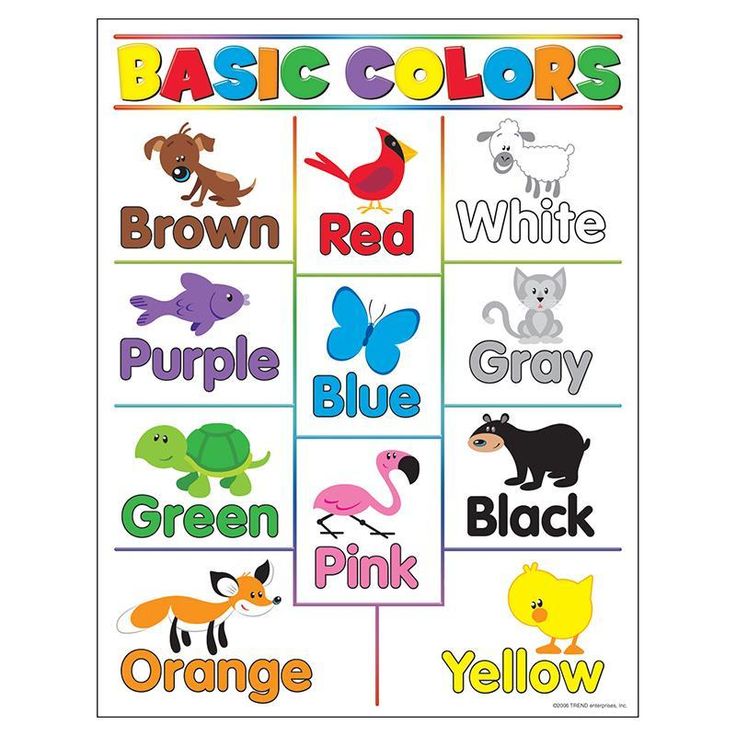 And you will see concrete results very quickly. Colors for children will no longer be an impossible topic to study.
And you will see concrete results very quickly. Colors for children will no longer be an impossible topic to study.
3) Learning colors with a baby. It has long been no secret for specialists where to start, how to learn colors with a child, in what order they should be taught, and what practical tasks to use for learning colors for children.
4) Job benefits. How to teach a child to recognize colors and distinguish them? Our tasks will help you get your child interested in learning colors. These methods will push you to use not only when learning colors, but in the future - for learning numbers, letters, sizes of shapes and more.
5) Step by step instructions and good advice. Perhaps you will understand your mistakes in teaching colors to children. For example, few people know that you should not often use (and it is better to exclude at the first stage) diminutive forms (call the colors blue, green, etc.), otherwise it will be difficult for the baby later, as he will perceive this form as initial.